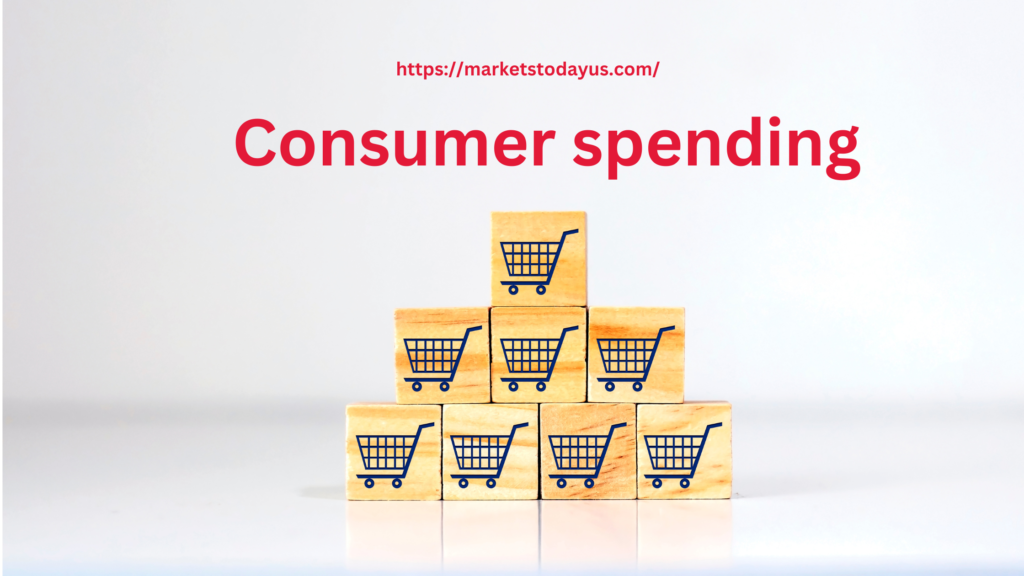Introduction on consumer spending:
The holiday season is usually a time when consumer spending increases, but this year the opposite occurred. According to data from the commerce department, personal consumption fell 0.2% in December. This is a decline from a revised decrease of 0.1% in November, and it missed economists’ expectations for a decline of 0.1%. Furthermore, inflation-adjusted personal spending also decreased by 0.3% in December.

Slowing Income Growth relation with consumer spending:
Personal income growth also slowed to 0.2% in December, which matches economist expectations. This follows a 0.3% increase in the previous month. Additionally, the savings rate jumped to 3.4% from 2.9% in November. This suggests that consumers are being more cautious with their money, possibly due to rising prices and interest rates.
Inflation on the Rise and consumer spending:
The personal consumption expenditures (PCE) price index, which measures how much consumers are paying for goods and services, increased 0.1% month-on-month. This follows a 0.1% increase in November. The annual rate moderated to 5% in December from 5.5% the previous month. The so-called core PCE index, which strips out volatile food and energy costs, and is the Federal Reserve’s preferred inflation metric, rose 0.3% in December. This is up from 0.2% in November. The annual rate moderated to 4.4% from 4.7% in November, which matches economists’ expectations.
Federal Reserve’s Role:
The Federal Reserve has been steadily raising borrowing rates across the economy, seeking to slow spending, growth, and the surging prices that have been a problem for nearly two years. The Fed raised its benchmark rate seven times last year, and it is set to do so again next week. The central bank’s key rate, which affects many consumer and business loans, is now in a range of 4.25% to 4.5%, up from near zero last March. The Fed is in an increasingly delicate position as it wants to keep boosting its key rate and to keep it elevated, potentially until the end of the year. But this policy may become untenable if a sharp recession takes hold.
Implications for the Economy on consumer spending:
The data from Friday may heighten concerns that the economy’s primary driver, the American consumer’s willingness to keep spending freely, is starting to crack under the weight of higher prices and interest rates. If consumers remain less willing to boost their spending, companies’ profit margins will shrink, and many may cut expenses. That trend could lead eventually to waves of layoffs.
Poem on Consumer Spending
“Economic Woes”
Rising prices and interest rates
Consumers tightening their purse strings
Holiday spending falls, it awaits
Elevated inflation, a warning
Personal consumption drops, a miss
Inflation-adjusted spending down too
Income growth slows, savings rate up
Economic worries start to brew
PCE index rises, but at a slower pace
Core PCE also climbs, but not as fast
Federal Reserve’s key rate now in place
But with a potential recession to surpass
The delicate balance of growth and inflation
A tricky task for the Fed to accomplish
But if consumers keep their spending in ration
Economic woes may begin to vanish
As the economy relies on consumer spending
The fate of companies and jobs hangs in the balance
Let’s hope for a steady and steady mending
And avoid a potential economic downfall in a glance.
Conclusion & consumer spending:
In conclusion, the data shows that US consumer spending cooled in December due to elevated inflation and rising interest rates. The Fed’s series of interest rate hikes are slowing the economy and the central bank is in an increasingly delicate position as it tries to balance economic growth with inflation. Consumer spending is the primary driver of the economy, and if consumers remain less willing to boost their spending, companies’ profit margins will shrink, and many may cut expenses, leading to a potential recession.
